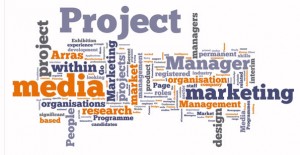When I first signed up for this Management Operations course I thought to myself, “When will I ever need to use this in my marketing career?” I didn’t understand how management operations and marketing could go together or benefit one another. After reading this article on what marketers can learn from project managers I learned the many ways it can improve their work habits, create successful results, and not to mention increase pay.
The top six behaviors that marketers should adopt from project managers are
1. Project cost tracking
2. Independent and collective task management
3. Project Planning
4. Return on investment analysis
5. Document and task management
6. Organized document storage
The responsibilities of a project manager and someone in marketing have similarities when it comes to customers, communication, allocating resources, cost efficiency, time management and many others. Using these techniques of a project manager would help to create stronger campaigns to drive more customers. It would also help to organize the time certain projects are due for clients. As we learn about crashing projects to shorten their duration it helps me to understand how I could utilize this behavior in the work place.
As a marketing major I can clearly see how these elements would help fix any and all the typical issues that occur in the marketing department. Most people believe that marketers don’t worry about reducing costs or fixing slack they say that’s for the finance or operations department to handle. But these types of issues could easily be solved by someone who is educated in marketing and project management rather than sending it to another department of a business to figure out.
Just by taking into account what I’ve learned already about calculating crash costs, slack, and project duration I can understand how useful these skills would be in the workplace. For example if I’m working on a project for a customer or a client, I’m going to be worried about how much time it will take, how much it will cost, and delegating responsibilities evenly and to the right people. I can already tell that operations management will help me go a long way in my marketing career and I’m looking forward to everything else I will learn.
How do you feel about integrating operations/project management to your marketing degree? Do you think it would be beneficial?
What elements of this course, that we have learned so far, do you see helping you in marketing?
Even if you aren’t a marketing major, how do you fit the course material into your major?
Why do you think it’s important to learn the different aspects of each business to benefit not only yourself, but the company as a whole?




